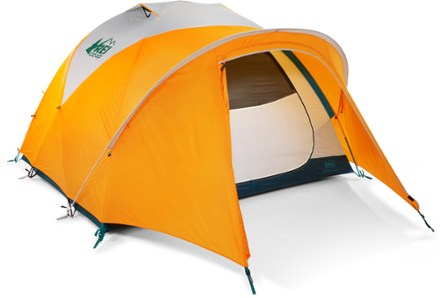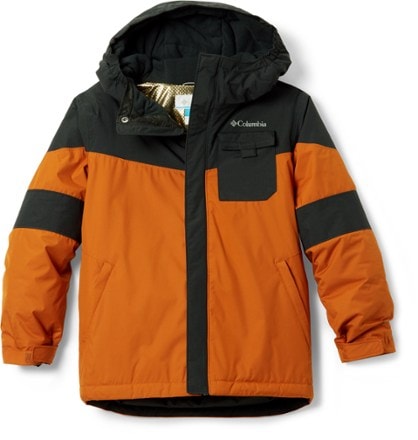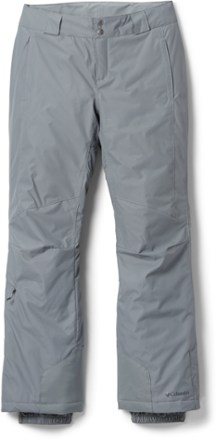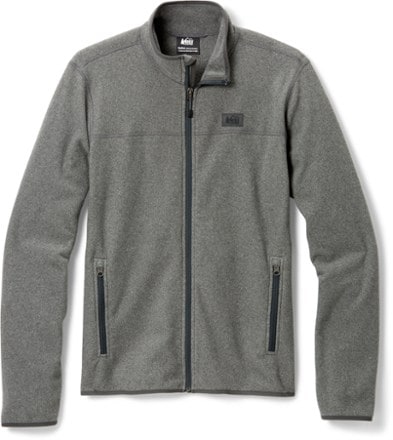Don’t go winter camping without the right winter camping gear.
The gear you bring will make or break your trip. Bring the wrong gear, and you’re in for a cold, wet, and all-around miserable trip. Not only that, but it’s also dangerous to be inadequately prepared while outdoors in cold weather.
Luckily, rounding up the best winter camping gear is a relatively easy task (although, depending on the conditions you expect, it can be expensive). For starters, you’ll need a winter sleeping bag, winter tent, and winter clothing. Keep reading this ultimate guide for other essential winter camping equipment.
Here’s everything you need to know to find the best camping gear for winter trips.

The Best Winter Camping Gear
Warmth & Shelter
Best Winter Camping Tent
Crua Outdoors Culla Maxx
Best Tent Heater
Mr. Heater Buddy Propane Heater
Best Sleeping Bag
Coleman Zero Degree Mummy Sleeping Bag
Best Sleeping Pad
Teton Sports XXL Camp Pad
Best Wood Camping Stove
Camp Chef Cylinder Stove
Personal Safety Equipment
Goggles
OutdoorMaster Ski Goggle PRO with UV400 Protection
Trekking Poles
Cascade Mountain Tech Carbon Fiber Trekking Poles
Avalanche Beacon
Backcountry Access Tracker S Avalanche Beacon and Probe
Waterproof Backpack
Earth Pak Waterproof Backpack
Clothing
Base Layer
WEERTI Thermal Underwear – (Men’s and Women’s)
Waterproof Mittens
Carhartt Men’s W.P. Waterproof Insulated Mitt
Cold Weather Winter Tents
Crua Outdoors CCulla Max
3-Person Insulated Tent
WhiteDuck Canvas Bell Tent with Stove Jack
REI Base Camp 4 Tent

Although a 3-season tent will work in mild weather, a 4-season tent is necessary for true winter camping, especially if you expect snow and below-freezing temperatures.
Your tent must be sturdy and waterproof. I personally prefer a double-wall tent for winter, but a single-wall tent often performs well in very serious weather, such as that you’d find while mountaineering.
Winter tents are available in a variety of sizes, from 1-person tents to 4-person tents. Unlike a normal camping tent which can often be sized up to create more livable space, a winter tent should be as small as possible to prevent heat loss through the floor.
Here are some additional tips to stay warm while tent camping to make your next winter trip even cozier.
Check out our complete list of The Best Winter Camping Tents here.
Winter Sleeping Bags
Coleman 0°F Mummy Sleeping Bag
Mountain Hardware

Coleman Big and Tall 0°F Sleeping Bag
A winter sleeping bag must be rated for below the coldest temperatures you expect to encounter on your trip.
We recommend a winter sleeping bag with a temperature rating of at least 10°F to 15°F lower than the coldest temperatures you expect to encounter on your cold-weather camping trip.
Another feature that improves insulation and heat retention is the bag shape. A mummy bag is much better for winter camping than a rectangular bag. Additional features like a hood with drawstrings and a draft collar further help increase warmth.
Winter Sleeping Pad
TETON Sports Outfitter XXL Camp Pad
Invoker 3″ Self-Inflating Memory Foam Sleeping Pad
Exped Megamat Self-Inflating Sleeping Pad
A sleeping pad isn’t all about comfort – it also provides extra insulation at night.
It creates an additional layer between your sleeping bag and the cold ground to increase warmth. Look for a sleeping pad with a high R-value for the most insulation possible.
Personally, I prefer to bring two sleeping pads for winter camping. One is a closed-cell foam pad and the other is a self-inflating air pad. Like other avid winter campers, I’ve found this setup provides the best insulation from the cold ground of winter.
Winter Clothing for Camping

Of course, the right winter clothing is just as important as a winter tent, sleeping bag, sleeping pad, and other winter camping gear.
The best way to stay warm while winter camping is by layering. We recommend a three-layer system so that you can add or subtract layers based on the weather conditions.
Winter Outerwear (Winter Jackets & Snowpants)


Your outer layer of clothing, also known as a shell layer, typically consists of a water-resistant jacket and pants. For winter camping, the jacket and pants must be waterproof and windproof. The best models are also lightweight and breathable.
You have a lot of winter jacket options. One big decision is between a true outer shell (minimal insulation but very lightweight) or an insulated jacket (warmer but heavier).
The price range (and quality) for winter jackets and pants vary widely. Casual winter campers should look for models around $100 to $200 for each piece. Serious winter campers (especially backpackers and mountaineers) can spend anywhere up to $500 or more for each piece.
Winter Middle Layer

The middle layer is the clothing layer underneath the waterproof outer layer. The goal of this layer is to provide insulation and heat retention instead of water resistance.
Your mid-layer options are numerous. The best choice depends on the conditions you expect to face on your winter camping trip. Popular choices are a pullover sweater, a zip-up jacket, or vest. The best materials include down, fleece, and wool as well as synthetic insulation materials.
Winter Base Layer
Your base layer is partially responsible for warmth and insulation – but it has an even more important main purpose: wicking moisture.
The goal of your winter base layer is to wick moisture away from your body to keep your skin dry. Keeping moisture away from your skin is extremely important while winter camping, because the freezing weather conditions can quickly cause you to become chilled (or even develop hypothermia) if perspiration is left in contact with the skin.
The best materials include nylon, polyester, and merino wool. Avoid non-wicking fabrics like cotton. REI has an excellent guide on how to choose base layers for camping. Although you have a few different style options, long underwear is one of the best, thanks to its comfort and versatility.
Winter Hat
A winter hat, like a beanie, is an essential piece of winter camping gear. The obvious reason is that it helps you stay warm. A hat’s insulating properties help you retain your body heat.
This is particularly important at nighttime. Outside Online recommends wearing a winter hat when you crawl into your sleeping bag to minimize heat loss in very cold weather.
Any type of beanie or knit hat will do the job well. There’s not really one specific type or model that we recommend above all others.
Winter Gloves
In addition to your head, the hands and the feet are two other body parts that lose a lot of heat while cold weather camping.
That’s why you need a good pair of gloves (or mittens) for winter camping! Quality insulation is the most important factor, although those that plan to get their hands damp should look into waterproof gloves. REI has an excellent guide on how to buy snow gloves and mittens.
Winter Boots for Hiking and Camping
Just like with winter clothing, the best winter boots for camping depends on your needs and preferences. For example, winter boots for hanging out in a campground are vastly different than the winter boots required for winter backpacking.
That said, there are still a few main factors to keep in mind no matter your expected application:
- Insulation – How warm are the boots?
- Waterproofing – How well do the boots block moisture from snow and rain?
- Traction – How well do the boots grip the terrain?
Naturally, it’s also important to find a pair of winter boots that fit well. Not only that, but you need to make sure they still fit when you’re wearing a pair of thick winter socks underneath.
When it comes to winter socks, look for a pair that’s warm and comfortable. They must also work well with your winter boots, especially if you plan to go winter hiking, snowshoeing, or cross-country skiing. Merino wool and synthetics work well because they help wick moisture away from your skin and promote breathability.
In addition to winter socks, a pair of liner socks further helps wick away moisture and increase overall warmth. These thin, lightweight socks increase comfort, prevent blisters, and reduce the risk of frostbite from sweaty socks freezing.
Finally, a pair of hiking gaiters over your winter hiking boots help prevent snow and ice from entering your boots or freezing to your pants. They are ideal for hiking, backpacking, and camping in deep snow.
Check out our post on The Best Winter Hiking Boots for even more choices.
Winter Backpacking Gear

Winter backpacking has much different gear requirements than winter backpacking.
First of all, backpackers require lighter gear than car campers. Lightweight versions of the winter camping gear outlined above (especially winter backpacking tents and winter backpacking sleeping bags) are available. Additional winter camping gear, such as a backpack, goggles or sunglasses, and hiking poles, are also required for backpacking in winter.
Waterproof Backpacking Backpack
Keep your winter camping gear dry with a waterproof backpacking backpack. Your backpack must also be comfortable, lightweight, and big enough to store all your winter camping equipment. The best winter backpack depends on the length of your trip and type of activity (camping, backpacking, skiing, etc).
Snow Goggles or Winter Sunglasses
Eye protection is incredibly important – and all too often overlooked – for winter outdoor activities. While it’s all but an essential for backpackers, mountaineers, and others traveling long distance, it’s also beneficial for winter car camping.
According to the American Academy of Ophthalmology, the snow reflects almost 80% of UV radiation. The sun’s reflection from the snow can cause discomfort, sunburn, and even snow blindness (a form of temporary vision loss).
Although a pair of full-blown snow goggles or glacier goggles are best for many winter activities, a good pair of sunglasses are all you really need for winter camping.
Trekking Poles
Rain and snow can make the hiking trails very slick in the winter! That’s why winter hikers and backpackers need a good pair of trekking poles to maintain their balance (and help maintain momentum) on this slick terrain.
For more information, check out our Complete Guide to Winter Backpacking.
Winter Camping Safety Equipment
Staying safe while winter camping, hiking, and backpacking is of utmost importance.
This starts with proper respect for the outdoors. So, keep an eye on the weather conditions, and don’t step outside your capabilities. But it also extends to bringing the right safety equipment.
Campers staying in a single campsite probably don’t need an avalanche safety kit, but backpackers, skiers, snowboarders, and others venturing into the backcountry certainly do.
Avalanche Beacon (+Shovel/Probe)
Never head into the winter backcountry without knowledge of avalanche safety.
If there’s even the slightest risk of avalanche, you must be prepared with the proper equipment, an understanding of safety protocol, and the ability to identify signs of avalanche danger. The most important pieces of avalanche safety equipment are an avalanche beacon, shovel, and probe.
Just as important as bringing the right gear is knowing how to use it. So make sure to take an avalanche safety course before stepping foot in avalanche country.
Winter Camping Stoves and Heaters

All of the winter camping gear outlined above will get you off to a great start. However, there are a ton of additional items and accessories that are beneficial for camping in snow and cold.
Mr. Buddy Winter Tent Heater
A tent heater provides a little extra warmth to your winter camping gear list. Most portable heaters run on propane so it’s important to properly ventilate your tent and never run while you’re sleeping. Although a ton of great models are available, the Mr. Heater Little Buddy is one of our absolute favorite.
Check out our picks for The Best Winter Camping Heaters here.
Camping Stove
Don’t forget to bring a camping stove on your winter camping trip. Not only is it one of the most important components of your camp kitchen for preparing delicious camping meals, but it can also be used to melt water and even provide a little heat. The MSR WindBurner is a fantastic stove for winter camping, although a white gas camping stove is essential for extremely cold conditions.
For more info on camping stoves, check out our post on the Best Camping Stoves here.
What About Hammock Camping in Winter?

One of my favorite winter camping alternatives is hammock camping.
Hammock camping in the winter might sound crazy at first. But with the right hammock camping equipment (including a sleeping pad, underquilt, and rainfly), it’s actually pretty warm and cozy.
It’s also a very lightweight option. A winter hammock is extremely portable and takes only a few minutes to set up each night. Better yet, it keeps you up off the cold and wet ground.
Check out our post on Hammock Camping in the Winter for more info on cold-weather hammocking.
Wrapping Up The Best Winter Camping Gear
While there are lots of different winter camping gear, much of it either isn’t warm enough or won’t hold up to rugged use. Hopefully, these picks helped you find the best winter camping gear for your collection.
- About the Author
- Latest Posts
Since 2015, Jake has been the technical heart behind our in-depth content. Hailing from the Pacific Northwest, he’s the one you’ll find crafting extensive gear reviews and detailed camping guides. With a decade of outdoor writing under his belt, Jake brings the beauty of the Sawtooth Mountains and his beloved Cascade and Olympic ranges right to your screen.



















Ted Gordon
Saturday 29th of December 2018
Wow! Such a great contents here. Big big thanks in putting this post together just to provide relevant and helpful ideas in choosing gears during winter camping.